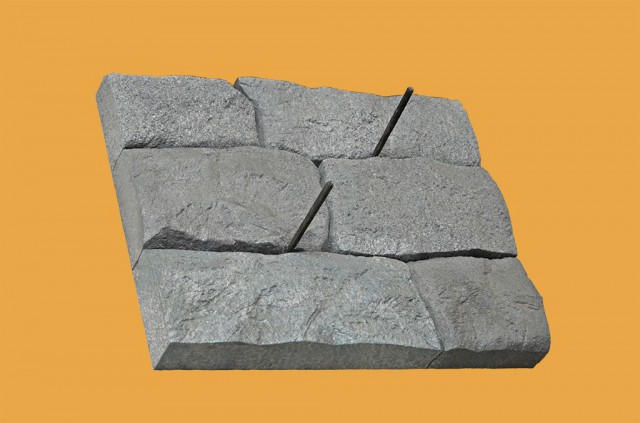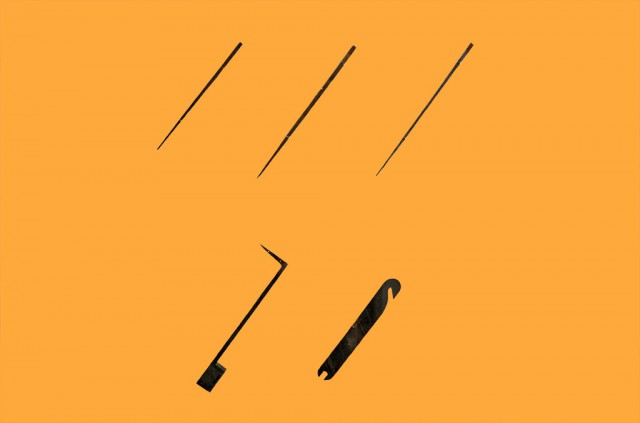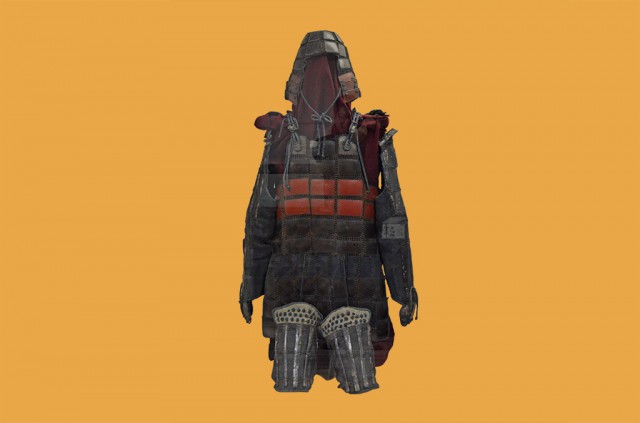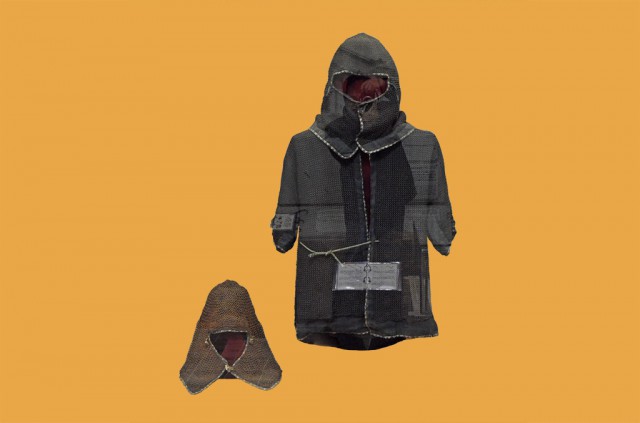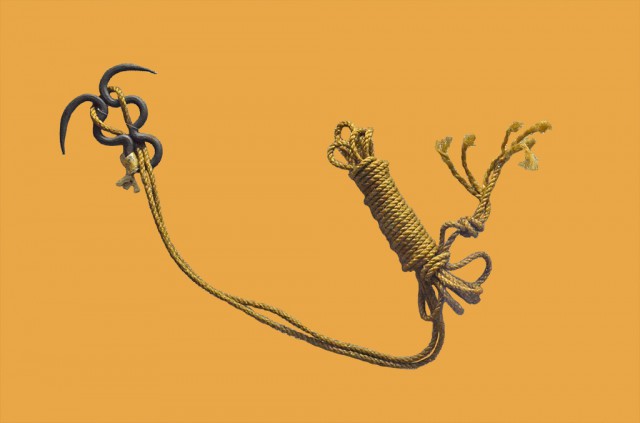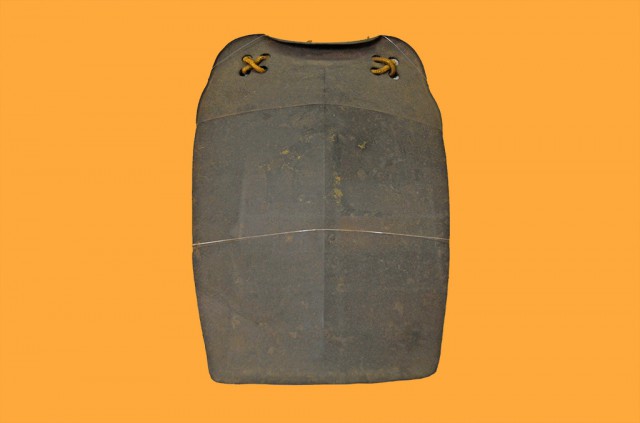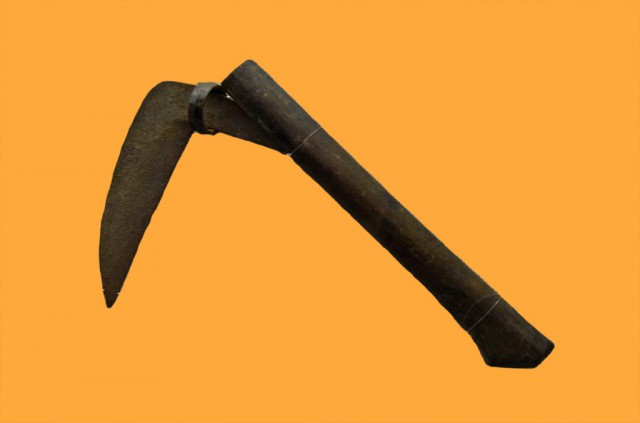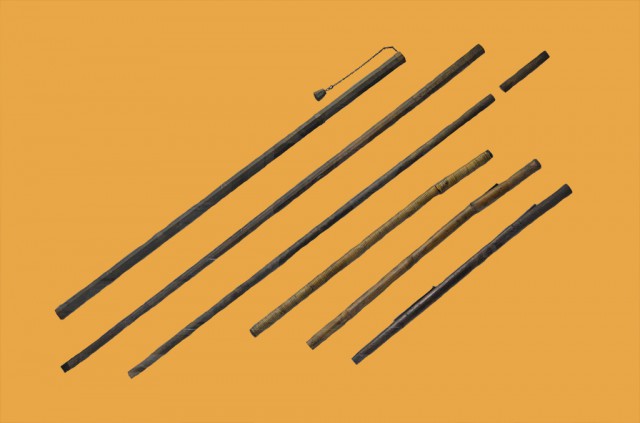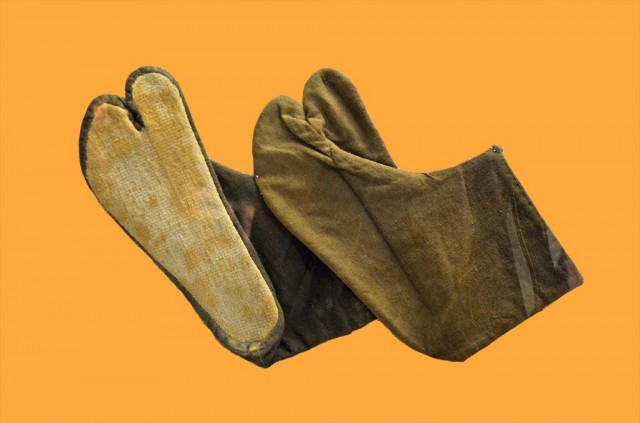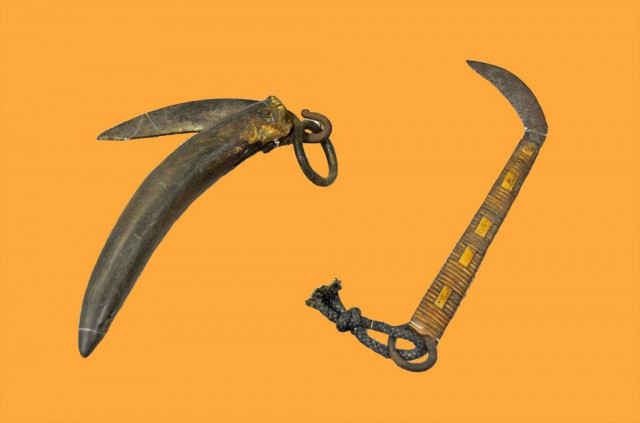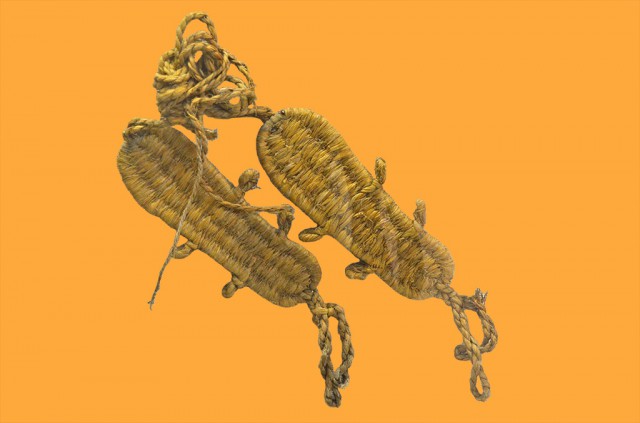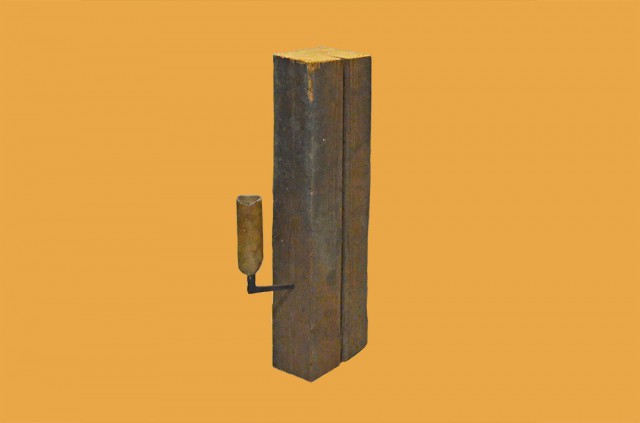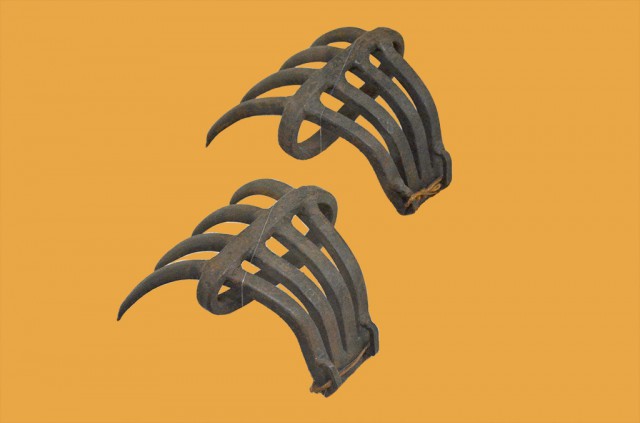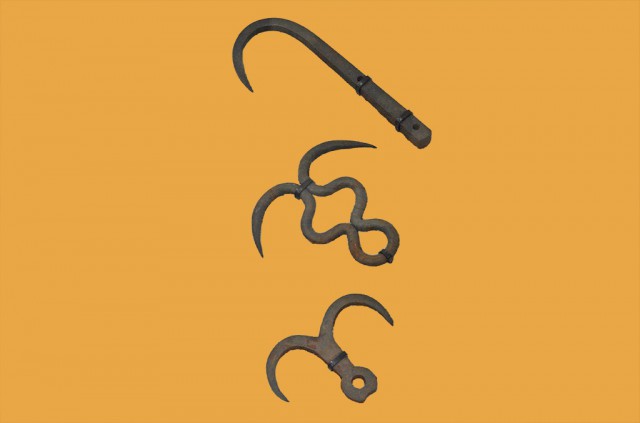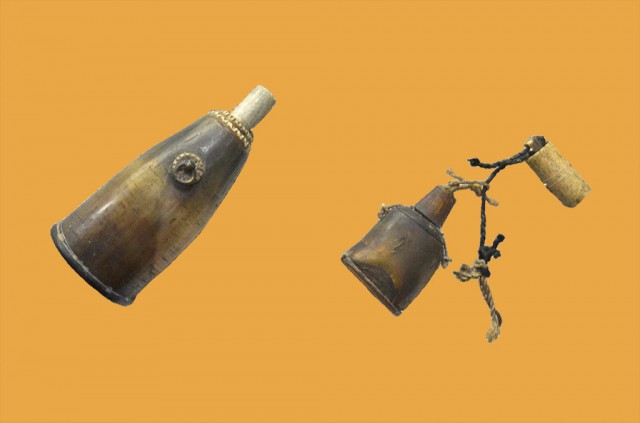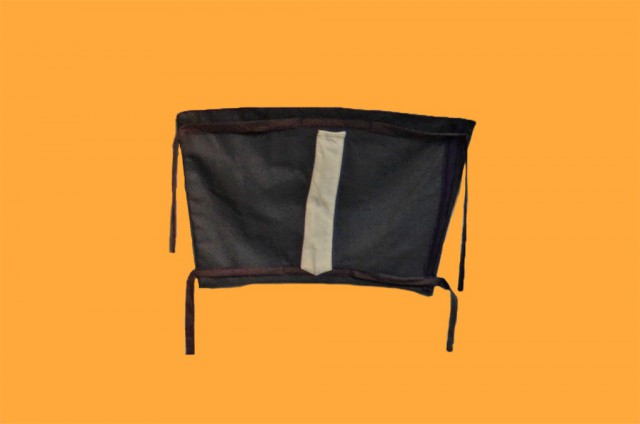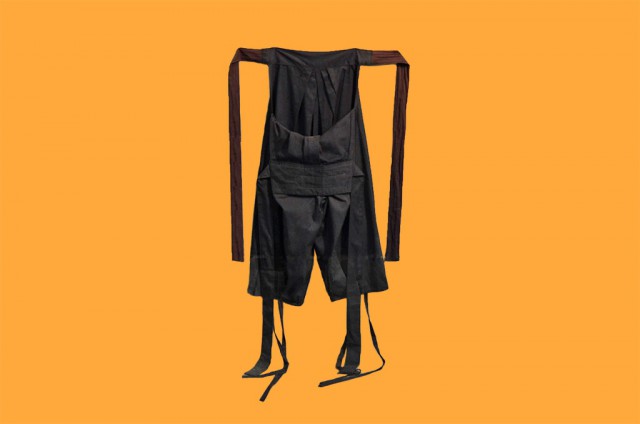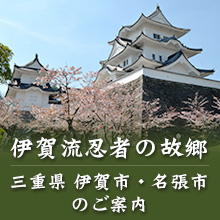Gear for crossing a swampy moat. Smaller than the more well-knwon mizugumo, the mizukaki were more portable.
Gosun kugi (lage nail)
Touki (Climbing Tools)
The ninja had no difficulty in climbing castle walls or stone walls which ordinary people could not climb.
The ninja used different kinds of ladders such as those made of bamboo or rope, as well as other tools resembling a pike pole, according to the climbing circumstances.
They also utilized farming implements to avoid suspicion, for example, they bound 4 sickles to use as an anchor. In other cases, the ninja fixed a metal wedge or large nail, which is more portable, in the stone wall or rock to climb by hands and feet.
Ninjas trained their fingers and toes every day, because, although they used a variety of tools, the hands and feet were most important in climbing.
Tataminomi (collapsible chisel)
Shinobi-katchu (ninja armor)
The ninja in some cases wore this chain-linked hemp garment under their ninja clothing during war when spying in the enemy’s camp. The shinobi-katchu could be folded up be portable.
Kusari Katabira (chain armor)
The kusari katabira is usually though of as effective for protection against swords or thrown daggers. In practice, however, it was not worn very often because of its weight. Rather, the ninja wore the kusari katabira to utilize its heaviness for training his jumping ability.
Kaginawa (rope attached to grappling iron)
To get past check points, a sword was hidden in a hollowed-out cane as used by travellers or inside a priest’s staff. A chain, a chain with weights or blinding power could be stored instead. Other canes could be turned into spears.
Muneate (breastplate)
Shinobi-gama (ninja sickle)
Shikomi-due (cane withe hidden weapon)
To get past check points, a sword was hidden in a hollowed-out cane as used by travellers or inside a priest’s staff. A chain, a chain with weights or blinding power could be stored instead. Other canes could be turned into spears.
Tabi (socks)
Waraji (straw sandals)
The lightweight waraji facilitates walking. The ninja used spikes worn on the straw sandals to move quickly on steep slopes or snow.
Tekko-kagi (“hand claw” weapon)
The tekko-kagi let the ninja snatch the enemy’s sword or attack the enemy.
(Donated by Mr. kiyoyoshi komori)
Tekagi (spiked iron band)
Kyahan (leggings)
Straight shaped shurikens or thin, long blades were hidden in front of the shins, serving also as protection. These weapons were easily removed and deployed during fights.
Hakama (culotte-like garment)
The basic shape was the same as farmers’ working clothes or everyday clothes with the bottoms made narrow. The left and right sides were made separately and sewn together near the obi (sash). This enabled free movement of the legs and body. A small shikoro (saw) was hidden around the back stay.

